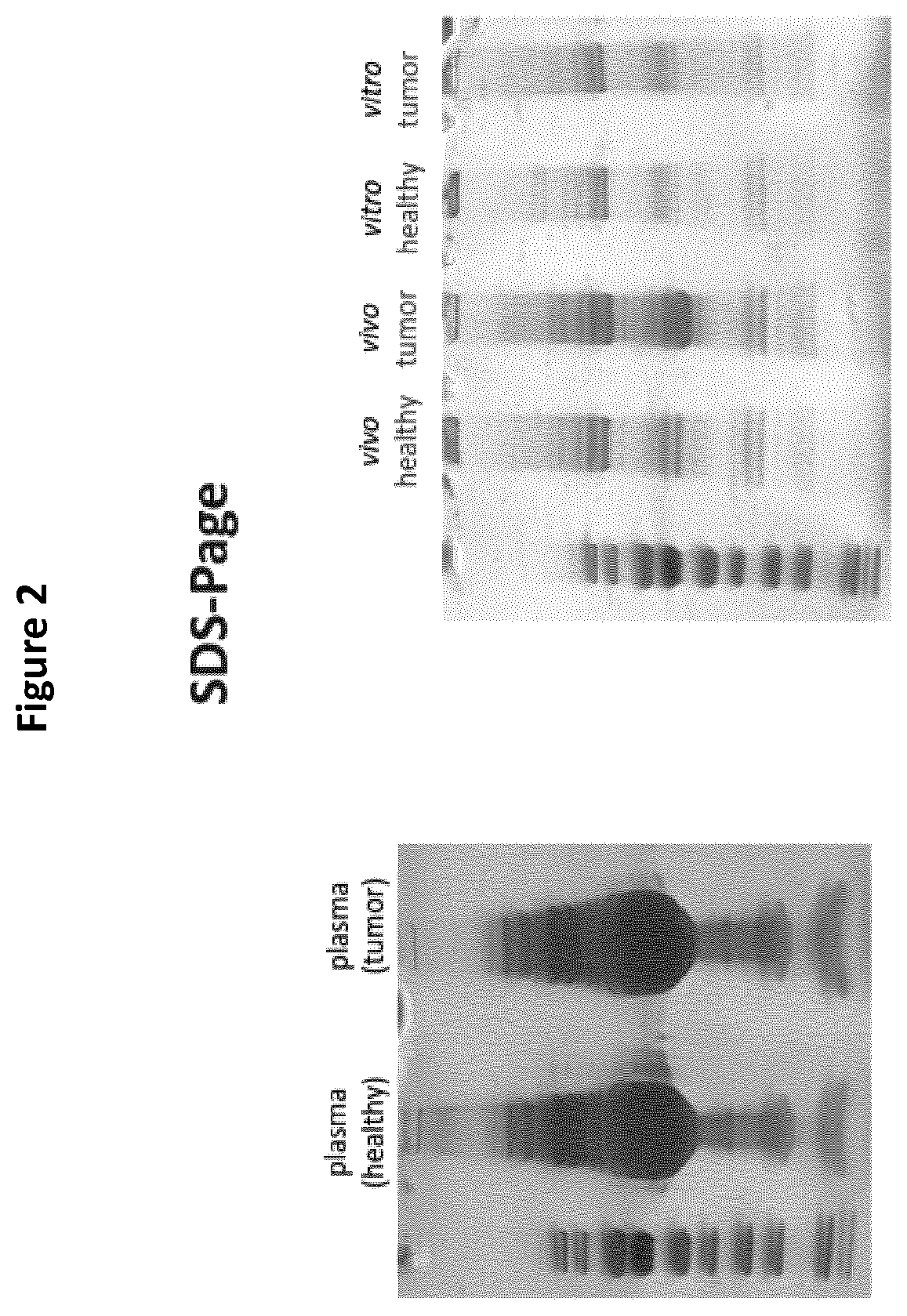Detection of cancer biomarkers using nanoparticles
- Summary
- Abstract
- Description
- Claims
- Application Information
AI Technical Summary
Benefits of technology
Problems solved by technology
Method used
Image
Examples
example 1
Mice Models
[0068]Six to eight week old male nude SCID beige mice were purchased from Charles River (UK). Five to six week old female C57BL / 6 mice were purchased from Charles River (UK). Animal procedures were performed in compliance with the UK Home Office Code of Practice for the Housing and Care of Animals used in Scientific Procedures. Mice were housed in groups of five with free access to water and kept at temperature of 19-22° C. and relative humidity of 45-65%. Before performing the procedures, animals where acclimatized to the environment for at least 7 days.
[0069]Lung Adenocarcinoma Model:
[0070]Six to eight weeks old male nude SCID beige mice were intravenously injected (via tail vein) with a549-luc cells (5E6 cell / 200 ul of PBS).
[0071]Melanoma Model:
[0072]Five to six week old female C57BL / 6 mice were subcutaneously injected (to the left leg) with 0.5×106 of B 16F10-luc melanoma cells in a volume of 50 μl of PBS.
[0073]Preparation of Liposome Nanoparticles
[0074]Materials
[0075...
example 2
Human Experiments
[0102]Subjects
[0103]Eligible patients included women with recurrent ovarian cancer commencing liposomal doxorubicin (Caelyx) treatment for the first time.
[0104]Nanoparticles
[0105]Dynamic light scattering (DLS), ζ-potential measurements and negative stain transmission electron microscopy (TEM) data showing physicochemical characteristics of the PEGylated doxorubicin-encapsulated liposomes (Caelyx®) employed in this study before and after dosing are summarised in FIG. 12.
[0106]Dosing and Blood Sample Collection
[0107]Patients were intravenously infused with Caelyx (diluted in 5% dextrose) at a dose of 40 mg / m2 for approximately 1.5 h. Collection of paired plasma samples (i.e. before and after cycle 1 infusion) were collected into commercially available anticoagulant-treated tubes (K2 EDTA BD Vacutainer). Plasma was then prepared by inverting the collection tubes 10 times to ensure mixing of blood with EDTA and subsequent centrifugation for 12 minutes at 1300 RCF at 4° ...
PUM
 Login to View More
Login to View More Abstract
Description
Claims
Application Information
 Login to View More
Login to View More - R&D
- Intellectual Property
- Life Sciences
- Materials
- Tech Scout
- Unparalleled Data Quality
- Higher Quality Content
- 60% Fewer Hallucinations
Browse by: Latest US Patents, China's latest patents, Technical Efficacy Thesaurus, Application Domain, Technology Topic, Popular Technical Reports.
© 2025 PatSnap. All rights reserved.Legal|Privacy policy|Modern Slavery Act Transparency Statement|Sitemap|About US| Contact US: help@patsnap.com



